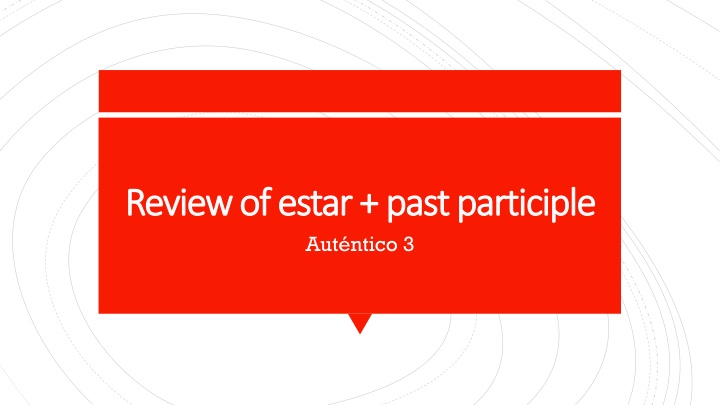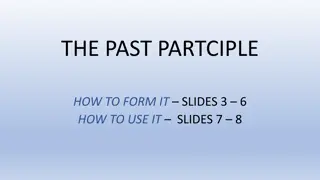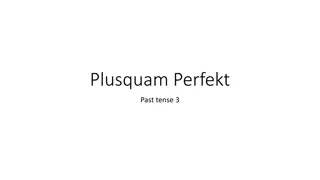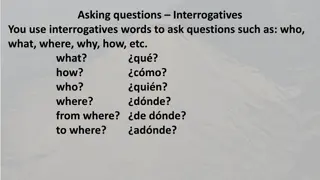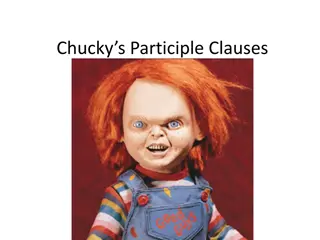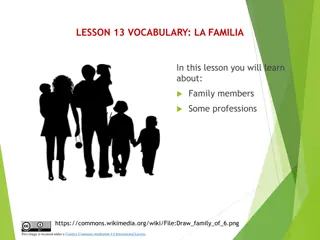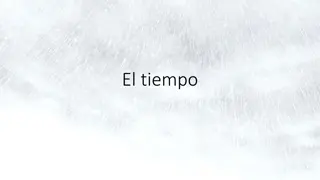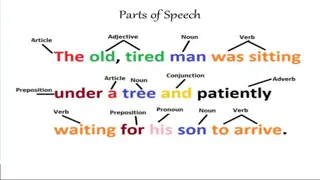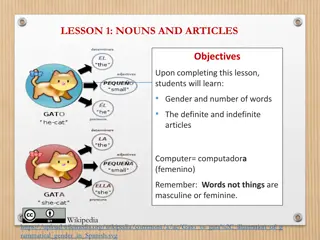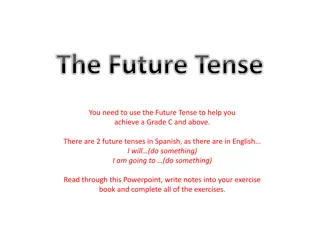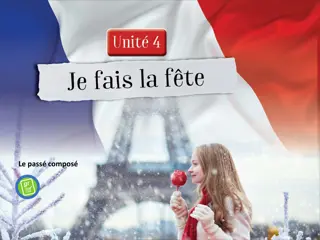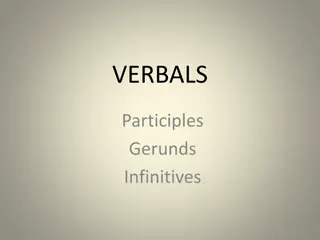Mastering Spanish Past Participles with Estar
Learn how to form past participles in Spanish using estar and how they are used to describe conditions resulting from previous actions. Discover regular and irregular past participles like abierto, puesto, dicho, hecho, and more. Enhance your understanding with examples and improve your Spanish proficiency.
Download Presentation

Please find below an Image/Link to download the presentation.
The content on the website is provided AS IS for your information and personal use only. It may not be sold, licensed, or shared on other websites without obtaining consent from the author.If you encounter any issues during the download, it is possible that the publisher has removed the file from their server.
You are allowed to download the files provided on this website for personal or commercial use, subject to the condition that they are used lawfully. All files are the property of their respective owners.
The content on the website is provided AS IS for your information and personal use only. It may not be sold, licensed, or shared on other websites without obtaining consent from the author.
E N D
Presentation Transcript
Review of Review of estar estar+ past participle + past participle Aut ntico 3
Estar + participio The past participle of a verb is formed by dropping the infinitive ending (ar/er/ir) and adding ado (for ar verbs) or ido (for er and ir verbs). hablar ar + ado = hablado comer er + ido = comido vivir ir + ido = vivido
Estar + participio Many adjectives in Spanish are actually past participles of verbs. The past participle is frequently used with the verb estar to describe conditions that are the result of a previous action. In those cases, the past participle agrees with the subject in gender and number. Ejemplos: El pintor est sentado. The painter is seated. Las paredes est n pintadas. The walls are painted.
Abrir Abierto Poner Puesto Dicho Decir resuelto Resolver Recall that there are Recall that there are a number of cases in a number of cases in which the past which the past participle is participle is irregular Escrito Escribir Roto Romper Hecho Hacer irregular Visto Ver Muerto Morir vuelto volver
